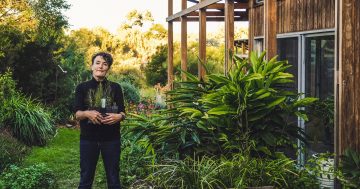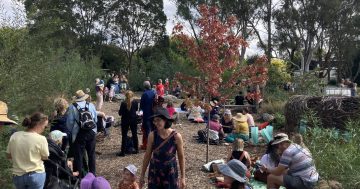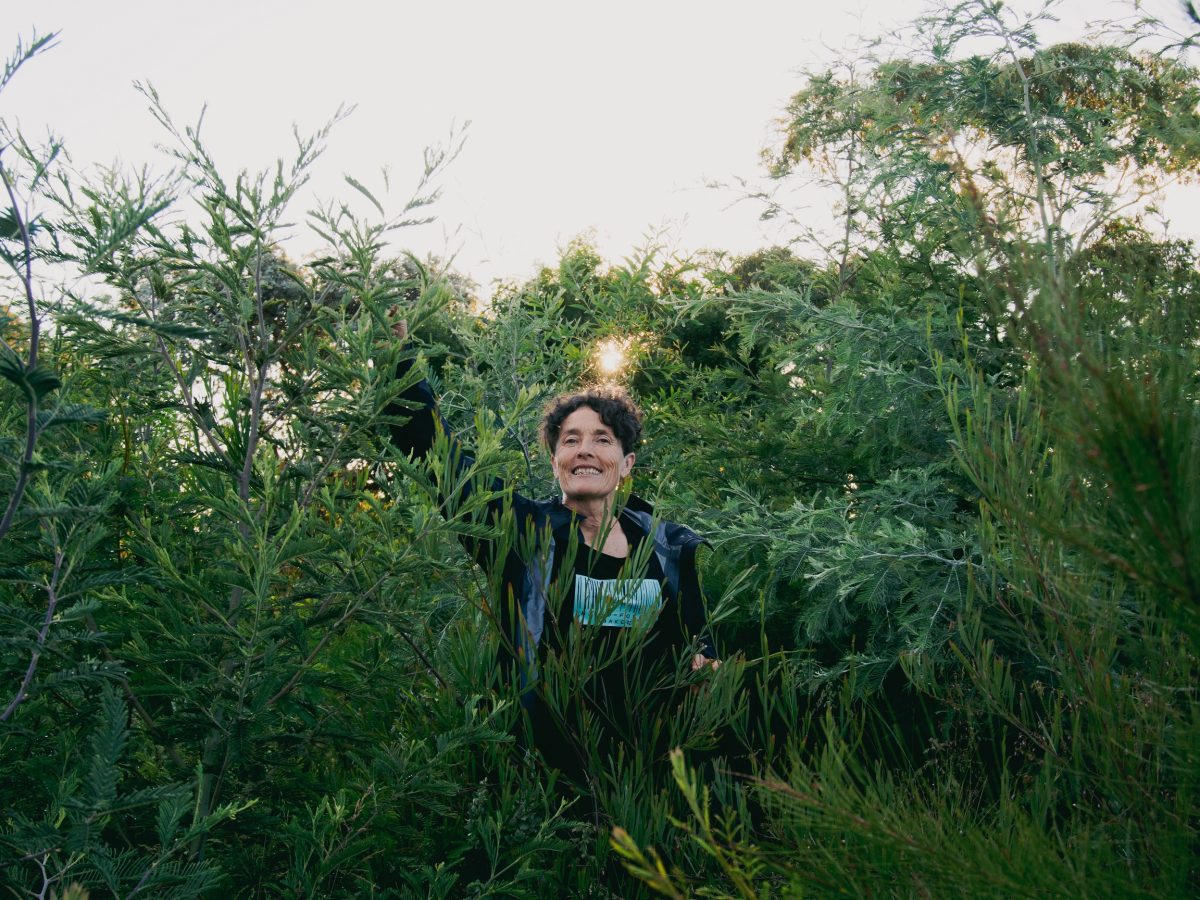
Edwina Robinson at the Downer microforest in Canberra’s Inner North, which has flourished since it was built in 2020. Photo: The Climate Factory.
Across NSW and the ACT, tiny patches of magic are springing up in cities and towns.
Microforests, some as small as a tennis court, densely packed with native plants and teeming with life, have brought a bit of the bush into suburbia.
There are three microforests in Canberra, another on the cards for nearby Queanbeyan, at least three in Wollongong, one in the centre of Moruya and another in Toowoomba.
One of the people behind the explosion of urban wild spaces is landscape architect and ecologist Edwina Robinson, founder of the Climate Factory.
Edwina wanted to put her skills towards tackling climate change, but wasn’t sure how until she watched a TED talk in 2019 about a Japanese method for creating tiny, self-sustaining forests and was inspired to try the technique here.
“I got to take part in a crowdfunding campaign, and we were successful and I found a site in Downer in the Inner North of Canberra,” she said.
“Downer has a lot of people who are into sustainability, and I thought if I can’t make it work in Downer, I can’t make it work.
“But we built it, and then three people from the suburb of Watson reached out and they wanted one, then a woman from Holt got in touch and was really excited, so now we’ve built three.”
Each microforest is slightly different.
The right mix of plants is identified by going out and taking surveys of local native forest that is relatively untouched.
The soil on the site is improved with local recycled organic matter, and water trenches and dry creek beds are created to harvest rainwater.
Then, a mixture of trees, shrubs, vines and groundcovers are planted at a density of about three to four plants per square metre.
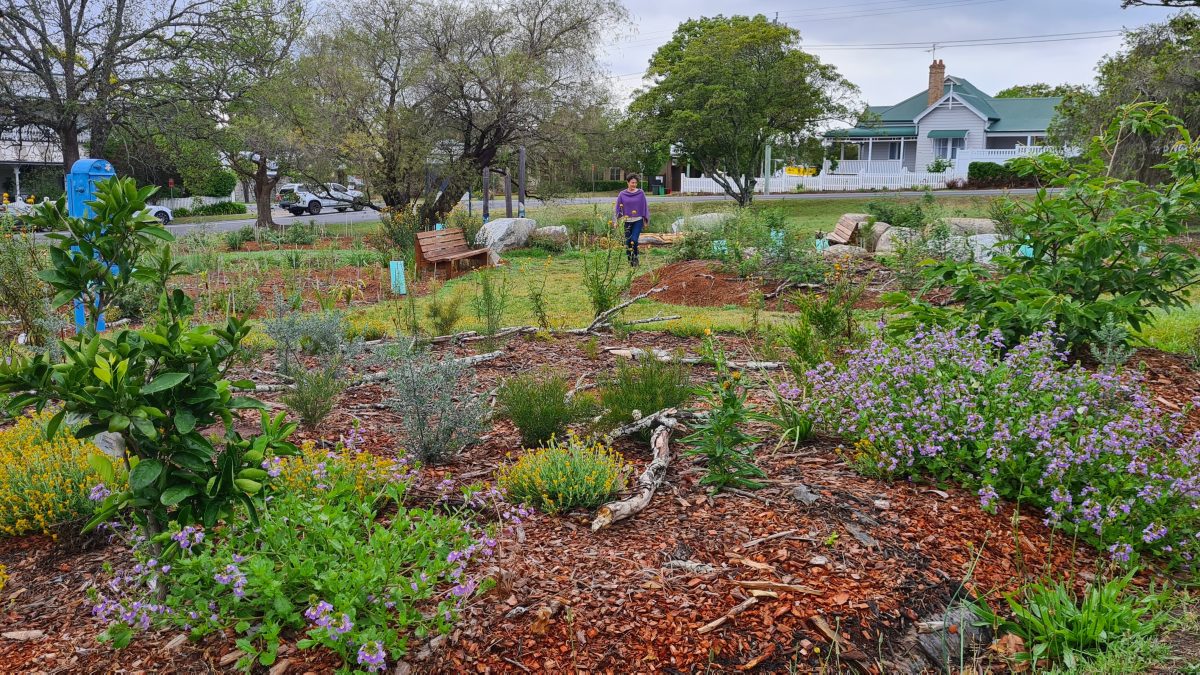
The Moruya microforest is just a few months old and includes a pollinator bed and wide pathways and clearings. Photo: The Climate Factory.
The dense planting encourages the seedlings to shoot up as they compete for sunlight and helps the microforest establish itself quickly – usually in about three years.
Ideally, they reach maturity in about 20 to 30 years, rather than the century or so it can take a forest to establish itself without help.
The forests are also planned with the local community’s needs in mind.
“In Canberra, a lot of our natives are pretty tall gums,” Edwina explained.
“We were planting just after the Black Summer bushfires, and we knew people would be worried about planting a heap of large eucalypts near their homes.
“Instead, we went to the Australian National University and got a list of native species that are adapted to a hotter, drier future, and chose currajongs to be our main tree species.
“Our second forest was led by mums with little kids, so it’s a little less dense and includes lots of logs for walking, clambering and balancing on.
“Then, in Moruya we came across a threatened local ecological community we could plant, a dry rainforest, and we’ve planted that there.”
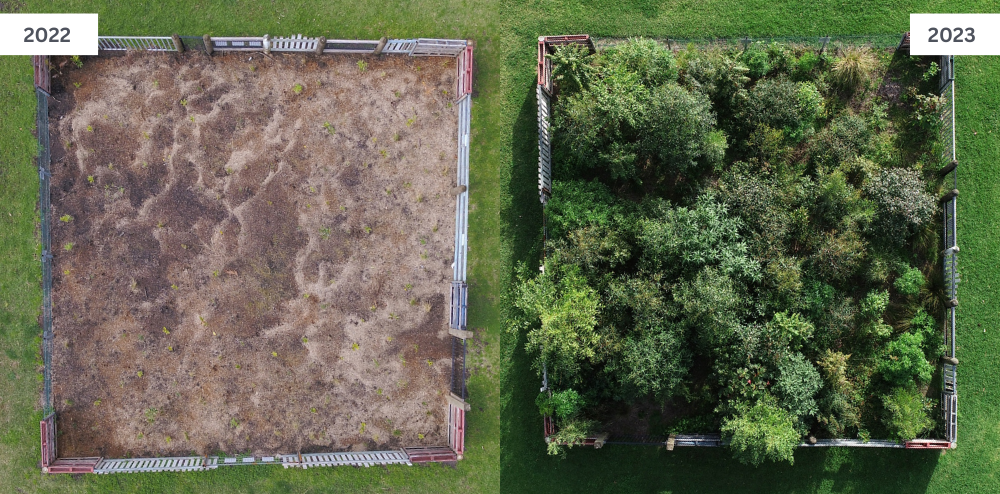
The site of the Tarrawanna microforest in 2022, compared to its first birthday in June 2023. Photo: Wollongong City Council.
In the Illawarra, Wollongong City Council has planted three microforests – one in Tarrawanna, one in the Botanic Gardens and one in Dapto.
These ones are extra tiny – about half the size of a tennis court – but councillor Tania Brown said they offered a big bang for your buck when it came to improving access to green spaces in suburbs.
“These multi-layered forests create 30 times more green surface area than a normal grass lawn,” Cr Brown said.
“What’s especially great about these forests is that they can thrive in busy, polluted and built-up areas.”
Those aren’t the only benefits.
Microforests can help take the heat out of urban areas, as the trees have a cooling effect – as well as offering much-needed shade.
They are a haven for local bird and insect species, especially when they include dedicated pollinator beds, like the Moruya microforest.
“We’ve included a native paper daisy and they grew really quickly,” Edwina said.
“In spring, we had lots of native bees using them. We’ve even seen some sleeping inside the flowers, which is really cute.”
A less tangible, but very real, benefit is for people’s mental health.
Constructed by teams of volunteers, microforests offer a way for communities to take action on climate change.
“We invite local people to lead them, do the crowdfunding, planning and planting,” Edwina said.
“It gives hope for the future, hope that we can make a difference.”
Original Article published by Zoe Cartwright on Region Illawarra.












